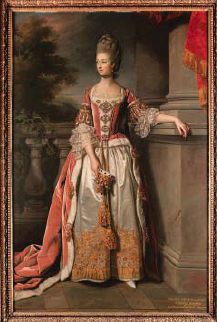Topics

Dr. Haydn's VI original canzonettas for the voice with an accompaniment for the Piano-Forte : dedicated to Mrs. John Hunter. London : Printed for the Author, & Sold by him at No. 1, Bury Street, St. James - at Messrs. Corri, Dussek & Co. Music Sellers to her Majesty, No. 7 Dean Street, Soho & Bridge Street, Edinburgh, [1794-1795]
Second sett of Dr. Haydn's VI original canzonettas : for the voice with an accompaniment for the piano forte / dedicated to the Right Honble. Lady Charlotte Bertie. London : Printed & sold for Messrs. Corri, Dussek & Co., [1795?]
Download images of the complete works: First set | Second set
What a time Haydn must have had during his London stays in the early 1790s! Already hailed as a great composer, and preceded by the performance and publication of numerous successful works including symphonies, string quartets, and works for keyboard, he was eagerly embraced by London society.
As reported in the Lady’s Magazine, January 1791:
“A remarkable circumstance happened this evening, in the ball-room at St. James's. Haydn, the celebrated composer, though he has not yet been introduced at our court, was recognised by all the royal family, and paid them his silent respects. Mr. Haydn came into the room with sir John Gallini, Mr. Wills, and Mr. Salomon. The prince of Wales first observed him, and upon bowing to him, the eyes of all the company were upon Mr. Haydn, every one paying him respect.”
Haydn lodged for a time with the composer and impresario Salomon. Directly across the street was the instrument maker Broadwood, who provided Haydn a room in which to work. Haydn was thus introduced to the English grand pianoforte, a stronger and more robust instrument than its Viennese relative. It spanned 5 ½ octaves and featured the sopra una corda (‘shifting’) pedal, together creating an instrument capable of a great range of expression. The canzonettas, published in two sets of six songs each, were conceived of as keyboard works with vocal accompaniment, the keyboard writing taking full advantage of the larger key span and the expressive techniques the improved piano mechanisms supported.
Haydn also came to know the firms Stodart, which patented an upright grand piano contained within a bookcase, and Longman & Broderip. The latter firm, also a publishing house, gave Haydn an English grand to take back to Austria. That instrument survives today, in England once again, in the Cobbe Collection at Hatchlands Park.
Lyrics for the first set of canzonettas were supplied by the poet and intellectual Anne Hunter (1742-1821). Anne Hunter was married to the renowned surgeon and anatomist Dr. John Hunter, (1728-1793) and they lived only a short distance from Salomon. Their weekly salon surely included Haydn among the guests. The Hunters also maintained a country house that included an anatomy laboratory where Dr. Hunter prepared animal specimens (and, notably, the skeleton of Irish “giant” Charles Byrne, now in the Royal College of Surgeons collections), and a menagerie of exotic animals. Being the adventurous sort, Dr. Hunter was said to occasionally shepherd his herd of buffalo into and through the streets of London. Interesting friends, indeed!
Anne Hunter, in a rare female professional collaboration with Haydn, was also the dedicatee of the first set of songs. The second work in that set, “A Pastoral Song” (“My mother bids me bind my hair”) found enduring fame, including as one of soprano Jenny Lind’s favorite recital pieces. The songs' immediate influence on other composers was also noted. The musicologist Howard Mayer Brown wrote, “Haydn’s canzonettas set a new standard for the genre in London, and even Beethoven in Vienna could not resist their influence during his struggle to find an individual style.”
The second set is dedicated to Lady Charlotte Bertie, Countess of Abingdon (1749-1794), the wife of Lord Abingdon, a politician, composer, arts patron, and one of Haydn’s many admirers. This set includes texts by various authors, including Mrs. Hunter, Shakespeare, and Metastasio. The final song in the set, “Transport of Pleasure,” included sentiments that were a bit too racy for proper English society, for example: “… transported with pleasure, I’m blest beyond measure, and die with delight in her arms…”. A new text was set immediately after initial publication, and the new version was titled “Content.” Stanford’s copy is one of few that contain the earlier text.

Lady Charlotte Bertie, Countess of Abingdon
A number of recordings of the canzonettas may be found in SearchWorks.
With thanks to Astrid Smith, Rare Book and Special Collections Digitization Specialist, and the Digital Production Group for providing downloadable images of these two items.


 Stanford University Home
Stanford University Home
Add comment